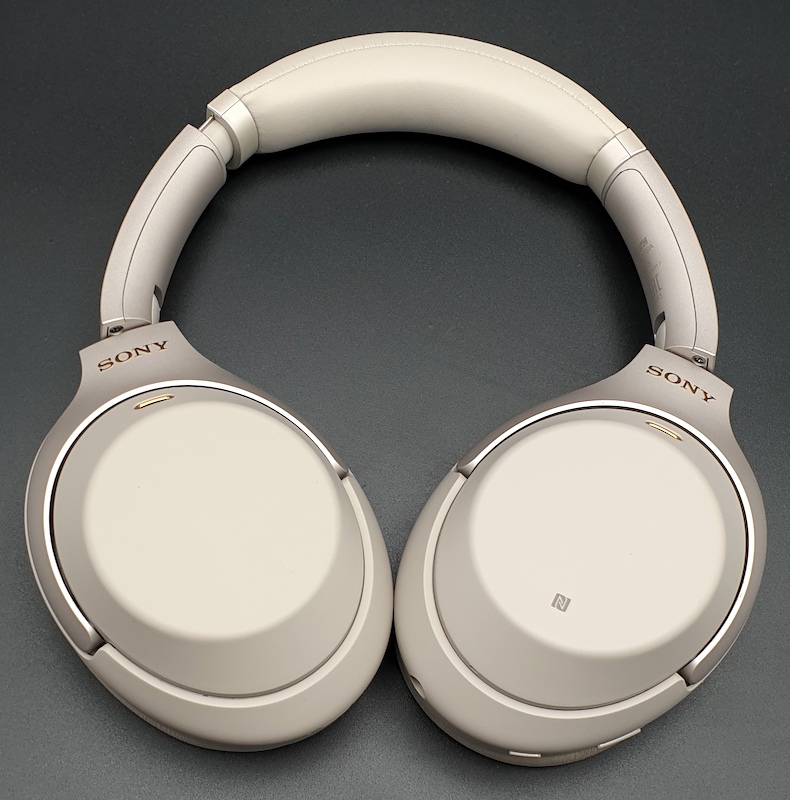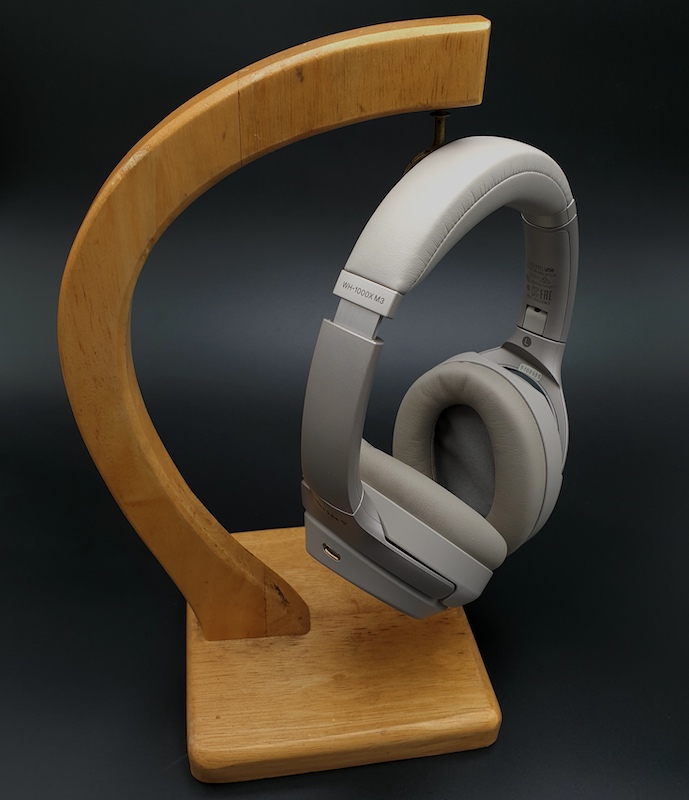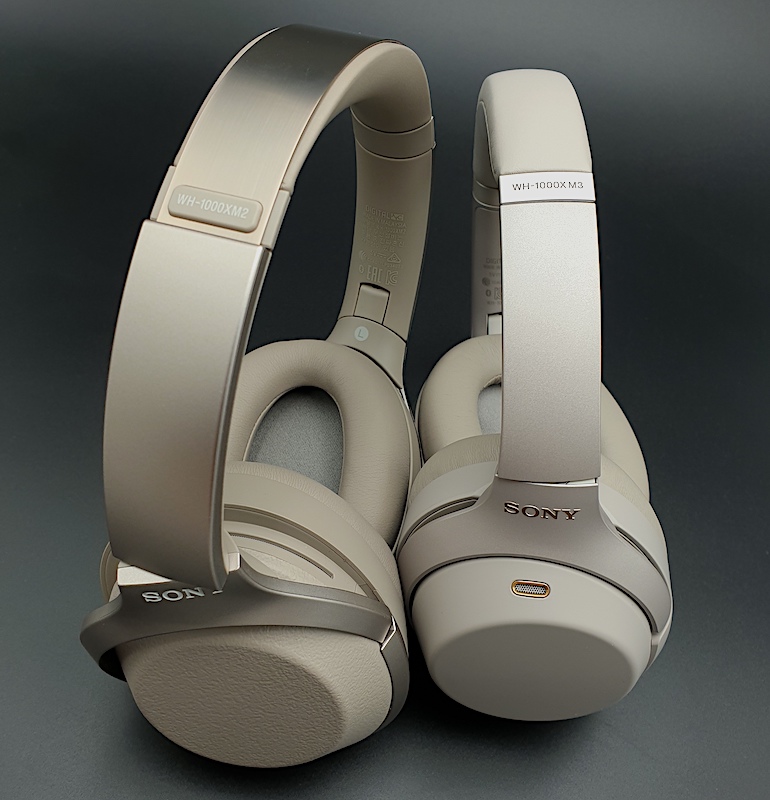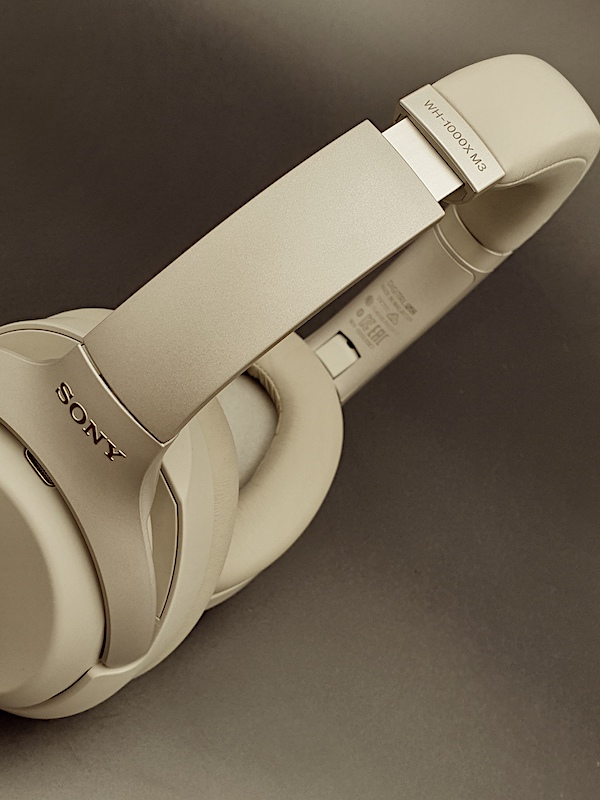SONY WH-1000XM3 noise-cancelling wireless headphones
+ Comfortable fit and great weight distribution; better finishing and copper highlights make it an even more premium product; improved sound quality and noise cancelling from the 1000X and 1000XM2, almost nothing to fault in its class; improvement in soundstage width and depth; bass now has good pacing and rhythm; app gives a lot of control over settings and noise cancelling; Google Assistant or Siri available through a button or a gesture.
– The touch controls are still somewhat fiddly for volume and track control, they takes some getting used to.
Sound: 8/10
Value: 9/10
PRIOR to 2016, the only serious name in noise-cancelling over-ear headphones was Bose, and as an owner of the Bose QC15, 25 and 35, I found them unrivalled. Enter Sony with the WH-1000X, a clear shot across the bows for Bose. Overnight, the 1000X set the new standard for premium noise-cancelling over-ear headphones and Bose had no real response other than a mildly tweaked version of the QC35s to enable smart assistant control.
I duly purchased a pair of 1000X and was super happy with them (also reviewed here on this site), until the Bowers and Wilkins PX came along which promised a B&W P7 with noise cancelling. I compare the two in another article on this site – but I will say that this is a personal opinion and tastes will vary. Sony, in the meantime, was not standing still – in short order, the WH-1000XM2 came out with some small but significant tweaks to the design, giving smart assistant capabilities and a control app on your phone to customise and optimise the listening parameters.

And not even a year later, the WH-1000XM3 is upon us, with further refinements to the design. Of note are the switch to USB-C for charging which enables a fast charge capability, switch away from a metal headband to reduce weight, tweaks to the ear cushions to allow a little more space in the cups, some really snazzy copper highlights on the dark finish models I tested. Inside, I have been told that the DSP has been further refined to improve the noise cancelling, and there’s a new analogue amplifier behind the drive units.
LISTENING
I tested the 1000XM3s in a few likely scenarios – on a plane, at home and in a noisy cafe – and driven wirelessly from an iPhone using the AAC lossy codec from Apple Music, on Sony’s LDAC codec from a LG V30+ from Tidal and locally stored high-resolution files. I also tried them using the wired connection to the LG V30+ and a Mojo/Poly headphone amp/streamer combination. I tried them with noise cancelling on and off, with the app set to optimise the noise cancelling for my ears and at the prevailing atmospheric pressure.
I listened to a wide variety of tracks from classical to acoustic jazz and rock, but I went back to the tracks I know well from my listening on various headphones.

Off the bat, it was clear that the already excellent noise cancelling from the 1000X and XM2 has been improved further – all without the “vacuum in your head” feeling which sometimes is felt with other noise-cancelling headphones. This was especially apparent on a Firefly flight on a turboprop aeroplane which can be rather noisy – the DSP did a very good job of reducing the din to a muted low level drone which was easily masked by music.
Listening to Karajan’s 1963 Beethoven Symphonies on Tidal MQA streaming, the improvements wrought with the new DSP and amplification become clear – wider sound-staging, better imaging of the sections of the orchestra, and clearer dynamics expressed in the swings of the music. The power of the Berlin Philharmonic was well conveyed by the XM3s, with Maestro Karajan clearly at the height of his powers.
Switching to Dave Brubeck’s Time Out (Single DSD rip from SACD), it’s clear that the ample bass in the 1000X has now been refined to provide a much improved pace and rhythm. This fixes my main complaint about the 1000X which had ample bass but was slightly “slow”, making complex rhythms a bit harder to understand. The complex threads of the non-4/4 rhythms were presented with clarity, and Paul Desmond’s sax had good tonal colour whilst weaving in and out of the rhythms.
Switching again to some rock, on Dire Straits’ Brothers in Arms (single DSD rip from SACD), the improved pacing was apparent. The warm signature ensured that the slight midrange glare in the mid-1980s digital production of the album was not an issue, whilst offering good insight into the mix and instrumentation. In particular, Sting’s voice on Money for Nothing was nicely rendered in the mix as the drums build up to to the famous guitar solo.

Rounding out the test tracks was a number of Apple Music tracks (from an iPhone X) from the service’s personally curated new music playlist. The XM3s deal well with compressed music streams; the DSEE HX function has a small but discernible effect of reducing the effects of the lossy compression, allowing for an airier presentation with compression artefacts all but eliminated.
Testing on the LDAC codec from the LG V30+ was also a pleasant experience, offering a step up in refinement and detail from AAC. Bluetooth reception was typically very strong, with the headphones able to pick up the signal from the room next door.
Switching to the wired connection, the headphones showed again a little more detail from the Chord Mojo/Poly. In a quiet room, another small improvement can be wrought by switching off noise cancellation, offering a slightly more “out of the head” presentation, but in most cases, background noise has a bigger effect and noise cancellation actually improves the sound by taking out external noise.
Battery life is quoted at 30 hours and is hard to run down totally – an hour on a fast USB-C charger will top up the XM3s handily.

Versus the 1000XM2/1000X
Against the 1000X, the XM3s show more transparency, deeper sound-staging and much better rhythm and pacing. It still retains the overall slightly warm presentation and ease of listening over long periods. If you have a pair of 1000Xs and like them, the XM3s are improved enough to warrant a serious consideration for upgrading. The improvements in comfort and finishing also elevate the premium feel of the headphones. Also of note is USB-C charging which is becoming the standard for mobile devices.
Compared to the XM2s, there is a less compelling case to upgrade. The XM2s are already an excellent pair of noise cancellers, while the XM3s offer the slightly more premium finish and a more detailed and expansive sound, and tighter bass. However, the difference isn’t night and day – it’s an incremental improvement, not a sea change. But the addition of USB-C charging may tip the balance if you are already using other USB-C based devices.
THE LAST WORD
Sony is onto another winner once again – I suspect I will be seeing these headphones more and more in aircraft cabins. Highly recommended.
Gear
Sources: Denon DP-80 direct-drive turntable, MicroSeiki MA-505X arm with Hana SL, ZYX Omega Premium MC, Miyajima Labs Koteu Mono MC cartridges; Roon Server on RoonOS running on an Intel i7 NUC feeding a Sonore MicroRendu driving a Mytek Brooklyn DAC+ via USB, Chord Electronics Hugo2 DAC / Headphone amp; Sony HAP Z1ES HDD player / Amplification: EAR 834P phonostage with Denon AU320 SUT; Goldnote PH10 and PSU10; Arcam SR 250; EAR 859 single ended triode, amplification / Speakers: Audio Note AN-E; Q Acoustics Concept 500; KEF LS50; Falcon LS3/5a / Wires: Belden, Kimber Kable interconnects; Isoda Electric Speaker Cable, QED Reference XT40 speaker cable
Price: US$350
Malaysian price: RM1,599
Malaysian distributor: Sony Malaysia






Leave a Reply